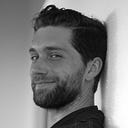Member-only story
The Spooky World of Quantum Biology

One hundred and fifty years ago, paleontologist Thomas Henry Huxley (an autodidact and philosopher who coined the term “agnostic” and was known as “Darwin’s Bulldog” for his passionate defense of natural selection) asserted that humankind would eventually take the processes of evolution into our own hands. Within a few decades of his proclamation, a cadre of equally brilliant scientists including Werner Heisenberg, David Bohm, and Max Planck began to unravel the mysterious properties of quantum mechanics.
These two theories — evolutionary and quantum dynamics — can each be considered among the most important discoveries of all time. Taken together, they have changed almost everything about the way we understand reality. However, in spite of the popularity of interdisciplinary research and unifying theories over the last hundred years (despite, even, quantum physicist Erwin Schröedinger’s 1944 book, What Is Life?), it was only recently that the relationship between these two vastly important domains was even considered. Now, a new kind of science, called “quantum biology,” is beginning to emerge — and it could change everything we know, again.
The premise is simple. Life is a molecular process; molecular processes operate according to the quantum playbook; therefore, life is a quantum process. And yet, it wasn’t until the nineties that anyone suggested biology could be better understood by looking at it through the lens of quantum theory. (The seminal paper was D.V. Nanopoulos’ “Theory of brain function, quantum mechanics and superstrings.”) Not long after that, the idea caught on — particularly in the neurosciences, where the idea of the brain as a quantum computer quickly became a topic of fierce debate.
Quantum computation, a science still in its infancy, promises swiftness and efficiency vastly superior to anything possible with conventional silicon chips. Rather than relying on binary bits like contemporary systems, quantum computers use “qubits” that include all possible superpositions of a particle’s classical state. Instead of being “trapped” in a single configuration, the logic gates of a quantum computer employ multiple possibilities in synchrony — using the entire set of alternative outcomes to arrive at an answer.
